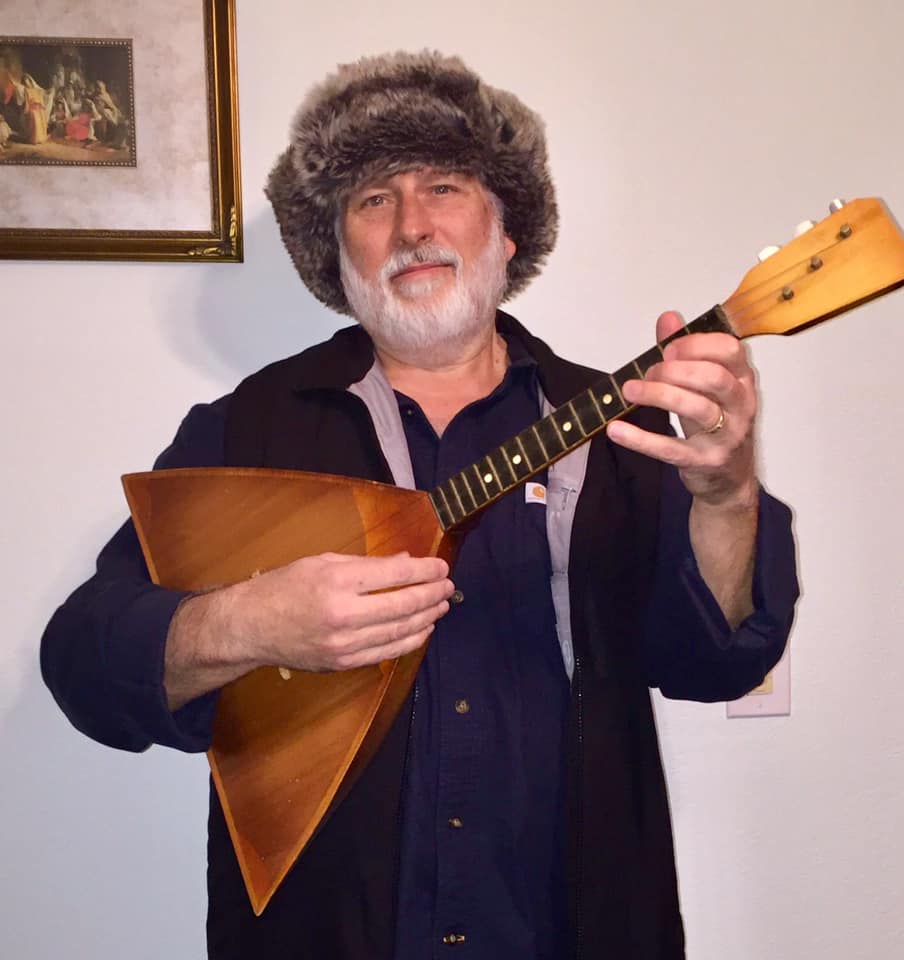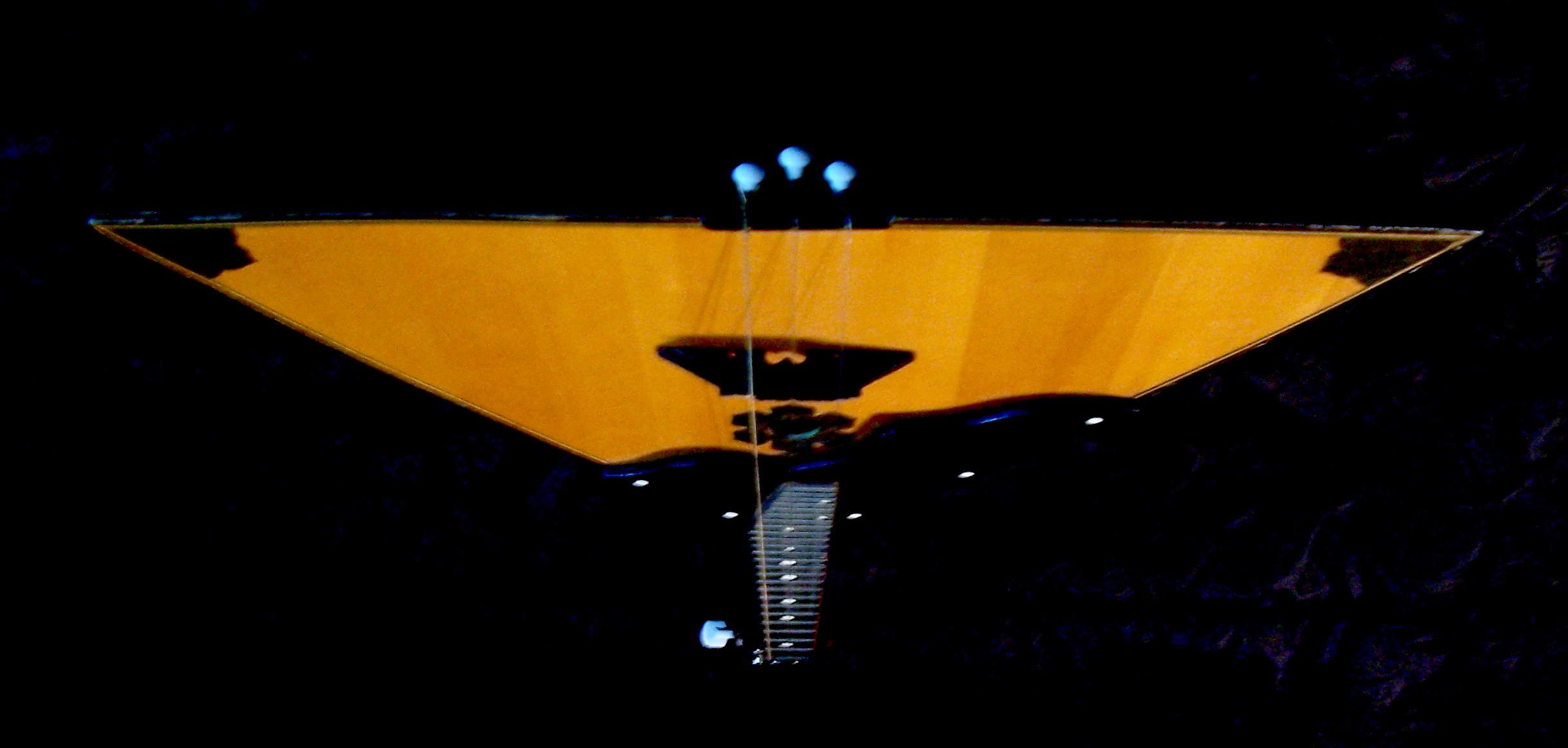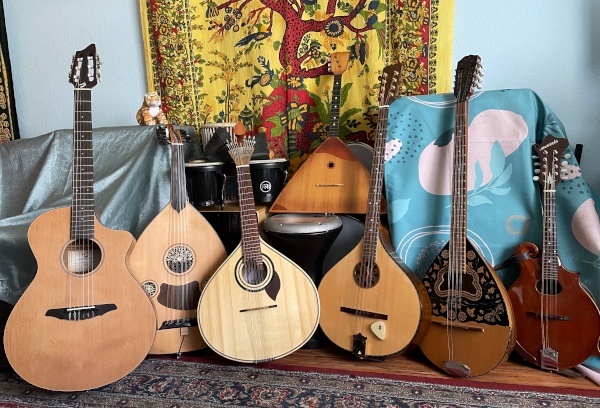Eastern Strings
Musiqa min Al Dunia As-Sharqia ~ Music from the Eastern World
Original Microtonal Music Inspired by Traditional Arabic Maqamat and Iqaat and Other World Music Traditions
by
California Multi-Instrumentalist
Nathan Craver
| About | ~ |
Balalaika
The Balalaika's History
According to historical accounts, in mid-17th century Russia, the tsar ordered all musical instruments to be burned and anyone caught playing an instrument was to be flogged and exiled to the Ukraine. Gradually, this kind of anti-musical extremism subsided and by the end of the 18th century, the balalaika had become very popular. Of course, fads come and go, and so by the mid-19th century, the harmonica had become very popular and the balalaika was only played by poor people who could not afford harmonicas!
The balalaika was rediscovered in the late 1800s by a young landowner from St. Petersburg named Vasili Andreev, who worked with several others to redesign an improved instrument and eventually build a whole orchestra around six different sizes of balalaikas. He took his orchestra on tour around the turn of the century and caused a worldwide sensation.
The balalaika, which means "chatterbox", is descended from the domra, which is very similar but with a round body. After the instrument ban in Russia, there were very few instrument makers and apparently the triangular shape of the balalaika was much easier to build. Today, the balalaika generally has three strings, although in the past it had from one to four. The most common size is the prima, on which the strings are tuned E-E-A, from low to high, with the two E strings either being the same pitch or an octave apart.
My History With The Balalaika
When I was in sixth grade in San Francisco, my class had a lesson in Russian folk dancing. I don't remember if balalaikas were involved or not, but we learned a dance called the Troika, which means 'three'. I think it had something to do with a carriage or wagon pulled by three horses.
Around the same time, we had a presentation on the instruments of the orchestra and we were given the opportunity to decide which instrument we would like to play when we went on to Junior High School in the fall. My first choice was drums, but apparently it was everyone else's first choice as well, so in the seventh grade I was sent to orchestra class to learn to play my second choice, the viola. I enjoyed playing in the orchestra, and continued to play for the next three years, but grew bored with the simple viola parts and practiced the more interesting violin parts whenever I could. I also would fool around with the string bass whenever I got a chance and would occasionally go into the band room at lunchtime and try out the various percussion instruments.
In my second semester of seventh grade, I got my dad's old guitar and began learning to play. Later that same year, the Beatles came out with their double-record set known as "The White Album", which I got for Christmas and listened to over and over, studying the music and lyrics. The opening song on the album was "Back In The USSR", which contained the line, "Let me hear your balalaikas ringing out". The balalaika was on my radar!
In 1975, I was living with a family in the Haight-Ashbury and attending San Francisco State University. A friend heard about a local folk club that met at a house nearby and invited me to come along with her. I seemed to fit right in and became a fixture of the San Francisco Folk Music Club for several years. Every other week, I would sit in the front room and join in with the sing-alongs. There were several old instruments hanging on the wall in the front room and one of them was a balalaika. No one else seemed to know what to do with it, so I did a little research to find out how it was tuned and one night I got it down and started playing fills behind the singers. I had also started playing mandolin, so I arrayed my arsenal of instruments and would switch between guitar, mandolin, balalaika and slide guitar.
In about 1982, I was living on Anza Street in San Francisco's Richmond district. One day, I was browsing through records in a music store and came across an album by a local band called Troika Balalaika. Of course, it caught my attention, but what really made me buy the record was that the contact address listed on the back cover was my address on Anza! The apartment number was downstairs from me, but they didn't live there anymore.
Many years and a couple of lifetimes later, the balalaika finally tracked me down again! One day in July 2005, I was walking down Main Street in Martinez, heading back to work, when I noticed a balalaika in the window of one of the local antique shops. I tried it out, left a deposit, and came back the next day to buy it. 30 years after I first played one, I finally had my own!
The song "Postcard" on the "Moondreams" CD was recorded just after I got my balalaika and was its debut performance.
Although I have never formally studied the balalaika and certainly don't play in the traditional manner, I think it's a very cool instrument (and fun to play)! I keep it on a stand in my studio so I can pick it up whenever the muse calls.
In 2020, I replaced my balalaika with the one pictured above.


